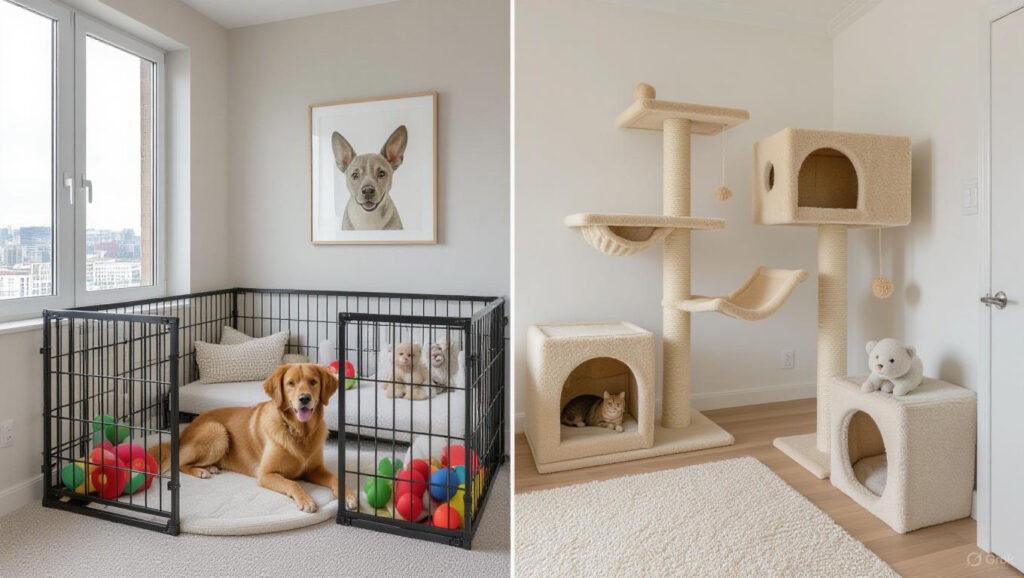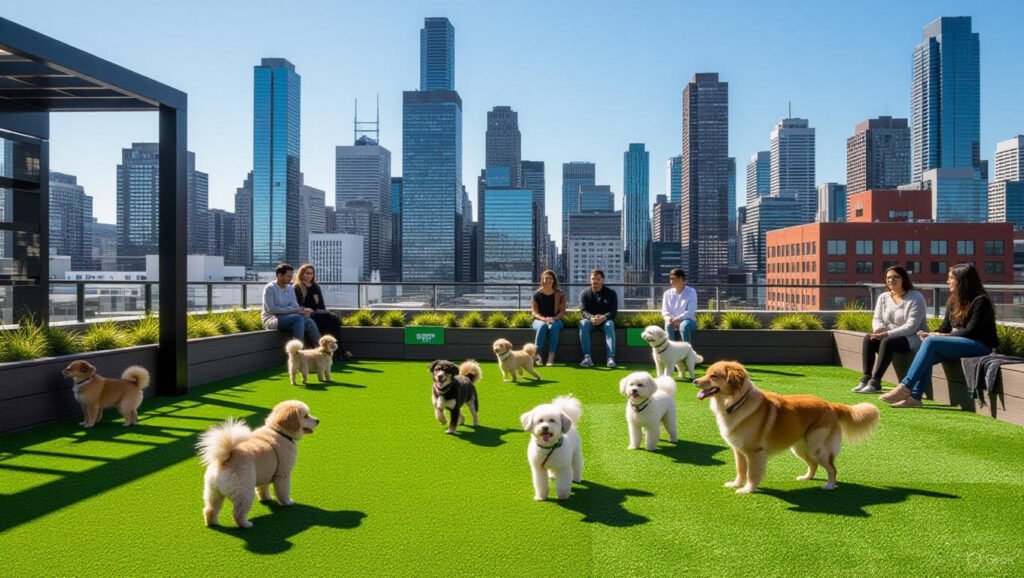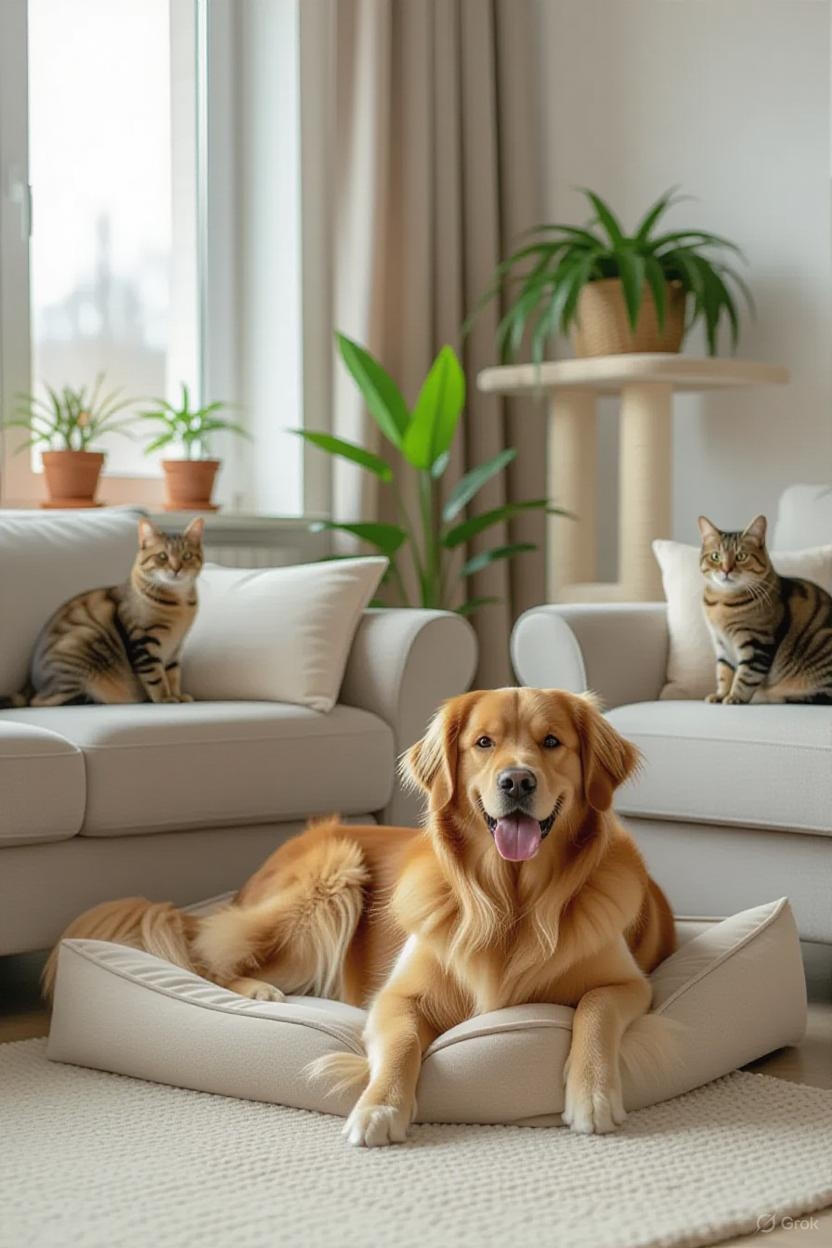The relationship between humans and their animal companions has evolved dramatically over centuries, transforming from purely utilitarian partnerships to deep emotional bonds that shape how we design our living spaces. Understanding where pets live today requires examining not just the physical spaces they occupy, but the cultural, economic, and social factors that influence their living conditions across different regions, species, and circumstances.
The Modern Pet Living Landscape
Today’s pets inhabit a diverse array of environments, from luxury penthouses in Manhattan to rural farmsteads, from purpose-built animal sanctuaries to makeshift shelters in developing nations. According to the American Pet Products Association, approximately 70% of U.S. households own pets, representing over 90 million families who have integrated animals into their daily living spaces.
The concept of where pets live has transformed significantly in recent decades. What was once a simple matter of outdoor dogs and barn cats has evolved into a complex ecosystem of indoor companions, outdoor adventurers, and everything in between. This evolution reflects broader changes in how we view animals – not merely as working partners or property, but as family members deserving comfort, safety, and enrichment.
Indoor Living: The Rise of the House Pet

The most significant shift in pet living arrangements has been the migration indoors. Modern pets, particularly dogs and cats, increasingly share our homes as permanent residents rather than occasional visitors. This indoor lifestyle offers numerous advantages including protection from weather, predators, and disease, closer bonding with human families, and better veterinary monitoring.
Indoor cats, for instance, typically live 13-17 years compared to just 2-5 years for outdoor cats, according to veterinary studies referenced by Wikipedia. This dramatic difference in lifespan reflects the safety benefits of indoor living, though it also necessitates careful attention to environmental enrichment to prevent behavioral issues.
Dogs have similarly transitioned from backyard dwellers to household members. Modern dog owners invest heavily in creating dog-friendly home environments, from baby gates and pet doors to specialized furniture and flooring choices. The indoor dog lifestyle requires consideration of exercise needs, mental stimulation, and appropriate spaces for rest and play.
Species-Specific Living Requirements
Different pet species have vastly different habitat needs, and responsible pet ownership requires understanding and accommodating these natural requirements within domestic settings.
Canine Companions: Adaptable Yet Needy
Dogs demonstrate remarkable adaptability to various living situations, from studio apartments to sprawling estates. However, their living arrangements must account for breed-specific needs, energy levels, and social requirements. Large breeds like German Shepherds and Golden Retrievers typically require more space and exercise than smaller breeds like Chihuahuas or French Bulldogs.
Urban dog living has spawned entire industries focused on maximizing quality of life in limited spaces. Dog parks, daycare facilities, and professional walking services have become essential infrastructure in pet-friendly cities. High-rise living has led to innovations like indoor grass patches, specialized elevator protocols, and rooftop dog runs.
Feline Friends: Territory and Comfort
Cats approach living spaces differently than dogs, viewing their environment through the lens of territory and security. Indoor cats require vertical spaces, hiding spots, and areas they can claim as their own. Multi-cat households need careful space planning to prevent territorial conflicts and ensure each cat has adequate resources.
The concept of “catification” – designing homes specifically for feline needs – has gained popularity among dedicated cat owners. This includes cat trees, wall-mounted perches, hidden litter areas, and secure outdoor enclosures (catios) that provide fresh air without outdoor risks.
Exotic Pets: Specialized Habitats
Exotic pets present unique challenges in terms of living arrangements. Birds require flight space, appropriate perching areas, and protection from drafts and temperature fluctuations. Reptiles need carefully controlled heating, lighting, and humidity systems. Small mammals like rabbits, guinea pigs, and hamsters require species-appropriate housing that considers their natural behaviors and social needs.
The exotic pet trade has raised important questions about appropriate living conditions for non-traditional companions. Many species require specialized knowledge and equipment that casual pet owners may not possess, leading to welfare concerns and regulatory responses in various jurisdictions.
Geographic and Cultural Variations

Where pets live varies dramatically across different regions and cultures, reflecting local attitudes toward animals, economic conditions, climate factors, and housing traditions.
Western Urban Centers: Premium Pet Living
In affluent Western cities, pets often enjoy living standards that rival or exceed those of many humans globally. Cities like New York, London, and Tokyo feature luxury pet hotels, high-end veterinary clinics, and premium pet food stores. Some apartment buildings cater specifically to pet owners, offering amenities like dog washing stations, pet-sitting services, and designated pet areas.
The rise of pet-friendly rental policies has transformed urban housing markets. Property managers increasingly recognize that pet-owning tenants represent a significant and stable demographic, leading to more accommodating lease terms and pet-specific amenities. However, housing costs and space limitations still constrain pet ownership in many urban areas.
Rural and Agricultural Settings: Traditional Arrangements
In rural areas, pets often maintain more traditional roles and living arrangements. Working dogs may live in barns or outdoor kennels while still receiving care and attention from their human families. Farm cats typically have access to both indoor and outdoor spaces, serving practical pest control functions while enjoying family companionship.
Rural pet living offers advantages in terms of space and natural environment access, but may present challenges in veterinary care availability and emergency services. The distance from specialized animal hospitals can be a critical factor in pet health outcomes.
International Perspectives: Diverse Approaches
Pet living arrangements vary significantly across different countries and cultures. In Japan, small apartment living has led to innovative pet products and space-saving solutions. Scandinavian countries often emphasize outdoor access and natural living conditions even for urban pets. In many developing nations, pets may live in more basic conditions but often enjoy strong community support and integration.
Some cultures maintain different relationships with animals that affect living arrangements. In certain regions, pets may live semi-independently, receiving care and feeding from communities rather than individual families. These arrangements can work well when supported by appropriate infrastructure and cultural norms.
The Economics of Pet Living Spaces
The financial aspects of pet living arrangements represent a significant consideration for many families. Pet ownership costs extend far beyond food and basic veterinary care to include housing modifications, specialized equipment, and ongoing maintenance expenses.
Housing Market Impacts
Pet ownership significantly influences housing decisions for many families. Pet-friendly rentals often command premium prices, and pet deposits or monthly pet fees add substantial costs. Home buyers may prioritize fenced yards, proximity to parks, or specific flooring types based on their pets’ needs.
According to Forbes, the average annual cost of pet ownership ranges from $1,000 to $3,000 per pet, with housing-related expenses representing a significant portion of these costs. This includes everything from pet damage repairs to specialized cleaning services and insurance premiums.
The Pet Industry’s Role
The pet living industry has expanded dramatically, encompassing pet furniture manufacturers, specialized contractors for pet-friendly home modifications, and technology companies developing smart pet products. This economic ecosystem supports millions of jobs and generates billions in revenue annually.
Innovation in pet living solutions continues to accelerate, with smart feeders, automated litter systems, pet cameras, and environmental monitoring devices becoming increasingly common. These technologies promise to improve pet welfare while offering convenience for busy pet owners.
Special Considerations: Pets with Unique Needs
Not all pets enjoy standard living arrangements, and special circumstances require thoughtful adaptation of living spaces. Pets with disabilities require particular attention to accessibility and comfort, demonstrating the lengths to which dedicated owners will go to ensure their companions’ wellbeing.
Senior pets may need modified living arrangements including softer bedding, easier access to food and water, and reduced physical barriers. Pets recovering from surgery or dealing with chronic conditions might require temporary or permanent modifications to their living spaces.
Multi-pet households present complex challenges in space allocation, resource distribution, and social dynamics management. Successful multi-pet living requires understanding species-specific needs, individual personalities, and group dynamics.
Environmental and Sustainability Concerns
Modern pet living arrangements increasingly consider environmental impacts and sustainability factors. Pet waste management, energy consumption for climate control, and the carbon footprint of pet food and supplies all factor into responsible pet ownership decisions.
Sustainable pet living practices include using eco-friendly products, implementing efficient waste disposal systems, and choosing locally-sourced foods when possible. Some pet owners invest in renewable energy systems partly motivated by their pets’ environmental needs, such as climate control and lighting requirements.
The environmental impact of different pet living arrangements varies significantly. Rural pets may have lower carbon footprints in some areas but higher impacts in others. Urban pets benefit from efficiency in veterinary services and supply chains but may require more energy-intensive climate control systems.
Technology and the Future of Pet Living
Technological advancement continues to reshape where and how pets live. Smart home systems increasingly incorporate pet-specific features, from automated feeding systems to climate control programs that account for pet comfort. GPS tracking, health monitoring devices, and behavioral analysis tools provide unprecedented insights into pet wellbeing.
Virtual reality and artificial intelligence applications promise further innovations in pet living spaces. AI-powered environmental controls could optimize living conditions based on individual pet behavior patterns, while virtual reality might provide enrichment opportunities for indoor pets.
The integration of pets into smart city planning represents an emerging frontier. Urban planners increasingly consider pet needs in designing public spaces, transportation systems, and residential developments. This holistic approach to pet-inclusive urban design could dramatically improve living conditions for both pets and their owners.
Health and Welfare Implications
The relationship between pet living arrangements and health outcomes is complex and significant. Proper living conditions directly impact physical health through factors like exercise opportunities, stress levels, and exposure to environmental hazards. Mental health considerations are equally important, with appropriate stimulation and social interaction essential for psychological wellbeing.
Veterinary research continues to refine our understanding of optimal living conditions for different species and breeds. Evidence-based approaches to pet housing design help owners make informed decisions about their companions’ living arrangements.
The rise of veterinary behaviorists and environmental enrichment specialists reflects growing recognition that where pets live profoundly impacts their overall wellbeing. These professionals help owners create living spaces that support both physical health and behavioral wellness.
Legal and Regulatory Frameworks
Pet living arrangements operate within complex legal frameworks that vary by jurisdiction. Housing discrimination laws, animal welfare regulations, and zoning restrictions all influence where pets can live and under what conditions.
Recent legislative trends show increasing protection for pet owners’ housing rights, with some jurisdictions limiting landlords’ ability to refuse pets or charge excessive fees. Emotional support animal regulations have also impacted housing access, though these remain controversial and subject to ongoing legal development.
Animal welfare laws establish minimum standards for pet living conditions, though enforcement and interpretation vary widely. These regulations continue to evolve as our understanding of animal needs advances and social attitudes toward pets shift.
Community and Social Aspects
Pet living arrangements exist within broader community contexts that significantly influence outcomes. Pet-friendly neighborhoods often develop strong social networks among pet owners, creating support systems that benefit both animals and humans.
Community resources such as dog parks, pet supply stores, and veterinary services cluster in pet-friendly areas, creating ecosystems that support pet ownership. These community amenities often become significant factors in housing decisions for pet-owning families.
Social media and online communities have revolutionized how pet owners share information about living arrangements, care techniques, and local resources. These digital networks provide valuable support, particularly for owners of exotic pets or those dealing with special circumstances.
Challenges and Future Directions
Despite advances in pet living arrangements, significant challenges remain. Housing affordability continues to limit options for many pet owners, particularly in expensive urban markets. Climate change poses increasing challenges for outdoor pet management and may require adaptation of living arrangements in vulnerable regions.
The aging pet population presents new challenges as veterinary care extends pet lifespans, requiring long-term planning for changing needs. Similarly, changing human demographics, including smaller household sizes and increased mobility, influence how we approach pet living arrangements.
Future developments in pet living spaces will likely emphasize flexibility, sustainability, and technology integration. Modular housing systems that can adapt to changing pet needs, environmentally controlled spaces that optimize comfort and health, and integrated technology that monitors and responds to pet behavior represent promising directions.
Conclusion: Creating Optimal Living Environments
The question of where pets live encompasses far more than simple housing arrangements. It reflects our evolving relationship with animals, our understanding of their needs, and our commitment to their welfare. As we continue to learn more about animal behavior, cognition, and wellbeing, our approaches to pet living spaces will undoubtedly continue to evolve.
The best pet living arrangements balance species-specific needs with practical constraints, creating environments that promote health, happiness, and strong human-animal bonds. This requires ongoing education, adaptation, and investment from pet owners, communities, and society as a whole.
Looking forward, the integration of pets into our living spaces will likely become even more sophisticated, with technology, design innovation, and deeper scientific understanding combining to create optimal environments for our animal companions. The future of pet living promises exciting developments that could enhance the lives of both pets and their human families.
Whether in a high-rise apartment with a dedicated pet area, a suburban home with a fenced yard, or a rural property with extensive outdoor access, the key to successful pet living arrangements lies in understanding individual needs, providing appropriate resources, and maintaining flexibility as those needs change over time. The investment we make in creating appropriate living spaces for our pets reflects not only our love for them but our recognition of their intrinsic value as sentient beings deserving of comfort, safety, and happiness.




